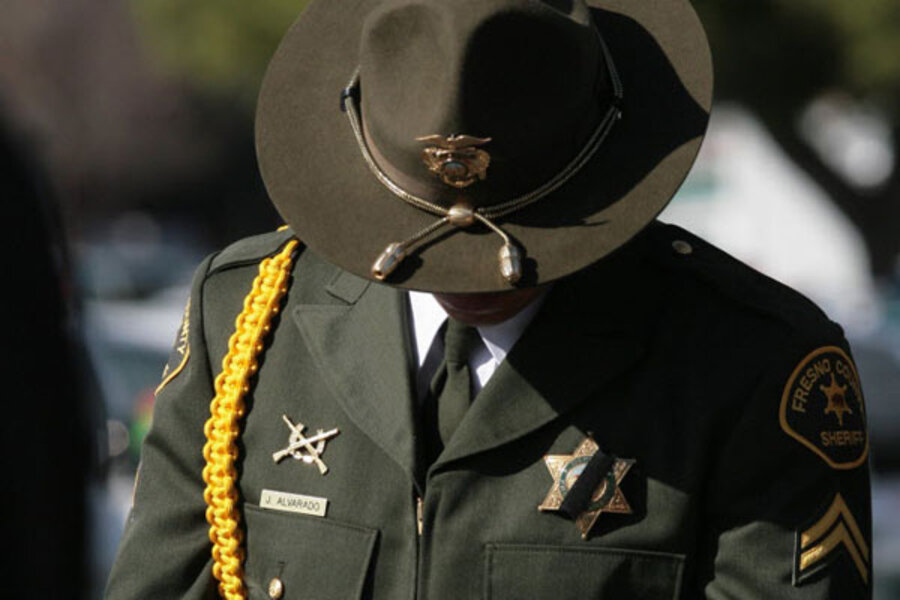Why police officer deaths rose 37 percent in 2010
Loading...
| Atlanta
The FBI says violent crime is down in the United States, but don't tell the nation's police officers that. The number of police officers killed in the line of duty rose by 37 percent in 2010 from the year before, presenting a complicated picture of the danger on American streets.
Variances in the number of police officers killed from year to year are common. In 2009, 117 were killed, a 50-year low, compared with 160 killed in 2010 – 59 of them in shootouts. But in five of the past 10 years, the number of police officer deaths topped 160, making the decade almost as dangerous for police as the street wars of the 1970s, when the average number of officers killed per year hovered around 200. And in the gangster heyday of the 1920s, about 150 died every year.
Among the reasons cited by the National Law Enforcement Officers Memorial Fund, which publicized the figures Tuesday: fewer officers doing more work; a rise in the number of distracted drivers, which makes traffic detail more dangerous; and heightened tensions between desperate criminals and police.
"Every cop that's slain or otherwise killed in the line of duty is a horrendous situation, but the numbers fluctuate so much percentage-wise because it really is a low-base-rate phenomenon. So even a little movement from one year to the next can produce a high percentage of difference over the previous year," says Lorie Fridell, a criminologist who studies police behavior at the University of South Florida in Tampa. "But it is interesting to note that the slaying of cops has increased, but it's not moving in accordance with the violent crime rate."
There are about 800,000 active local, state, and federal law-enforcement officers in the US. In 2010, officers were killed in 30 states as well as Puerto Rico, with the California Highway Patrol and the Chicago Police Department experiencing the most deaths.
As in previous years with large numbers of officers killed, so-called cluster killings – more than one officer death at a time – helped drive up the statistics. For example, in May, two police officers working an antidrug beat in West Memphis, Ark., were killed by two men using AK-47 rifles, according to the Associated Press. The two men were later killed by police in a shootout in a Wal-Mart parking lot.
Multiple officer killings also included a June incident in Tampa, where two police officers were killed during an early-morning traffic stop. And in an August incident in the Alaska village of Hoonah, a man allegedly killed two officers in front of his home.
One possible cause for the rise in police deaths is that society appears to be producing a small contingent of violent criminals who are ready to take on authority figures. "A more brazen, coldblooded criminal element is on the prowl in America, and they don't think twice about killing a cop," fund chairman Craig W. Floyd said, according to United Press International.
Fund officials also cite as possible causes slashed police budgets. Although it's tough to prove on a general basis, Ms. Fridell says research shows that "officers having to work overtime and double shifts can produce significant officer fatigue, and that fatigue could impact their driving abilities, maybe producing crashes." She continues, "Or it could impact their decisionmaking in potentially violent encounters."
The number of police officers killed in traffic incidents rose from 51 in 2009 to 73 in 2010 – a phenomenon that can be linked both to more distracted drivers and to more distracted police officers, says Fridell.
With cellphones, mobile data terminals, and other police equipment around them in their cruisers, "there are many opportunities for officers to be not attending to driving," she says.





